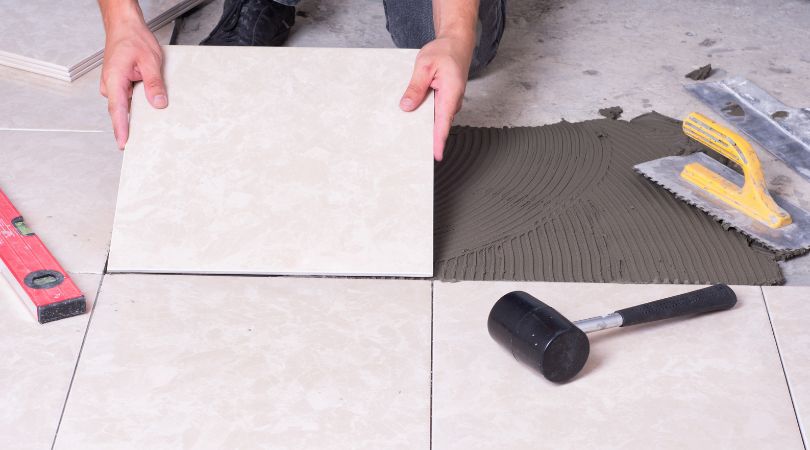
Dealing with tiling in a new home or during a renovation can be quite the experience, especially if you’ve never had experience dealing with that sort of aspect of building work. There are a few things you will need to know before you can tackle a job of this magnitude, as we will cover in the following points:
When Tiling Shower Trays
You must ensure you tank before tiling your shower trays, both for bath areas and wet rooms, so you can make an area completely waterproof. This ensures you will have fewer issues in the future, and you can still keep the tiling fixtures you worked hard on.
Making a Small Bathroom Look Bigger
Wall-mounted sinks and toilets will give smaller bathrooms the illusion of more space while making them far easier to clean. Use light-coloured plain tiles, and ensure you keep the same shade on the walls and the floors. You can add more colour with towels and accessories.
Retiling Old Floors
When renovating, lifting the old vinyl flooring tiles may be hard or just downright tedious. You could tile right on top of the existing floor, assuming it’s secure and clean enough, but it’s not an ideal solution. You can prime it first with an appropriate primer and ready to go.
Drilling Tiles
Put masking tape on the spot you intend to drill. This will not only stop the drill from sliding around but also help keep it together. Avoid using the hammer action on the drill, and be gentle as you press down. Don’t push the drill into the tile; just let the drill do the work for you and work with patience. If the hole is meant for a screw that needs to go into a raw plug, make the hole in the tile bigger than the hole in your wall. The rawl plug goes into the wall and doesn’t overlap with the tile. Otherwise, that will end up breaking it.
Framing Alcoves in a Shower
Make your shower alcoves smaller if you need to, but making them bigger takes more work and more details involved. You should decide on a finished measurement initially, then move to build the alcove about 20 to 40mm wider than that. Most tiles are 8-10mm thick, so you have some wiggle room to adjust for adhesive depth and alignment with the grout joints.
Decorating a New House with Multiple Bathrooms
Your choice of tiles may be a source of confusion regarding having more than a single bathroom. It may be a good idea to keep things simple, especially regarding kids’ rooms. Choose plain white tiles, as they won’t date and brighten those up with a mosaic border or some sprinkles of colour. This timeless look will be easy to maintain for many years.
Tiling of Bath Panels
If you are tiling the panel on a bath or boxing the whole place, you should ensure you use great quality waterproof plywood. This will allow you to gain access to the plumbing when necessary without the use of ugly screws. Cut a segment of plywood and fix it to the panel with magnets. You can find them at most DIY stores, as they are used for cupboards without handles and similar solutions. Once the segment is tiled, you should attach it to the main panel and grout the joint. When you’re done, you will have a convenient way of accessing the underside of the bath, simply removing the grout and the panel. You can replace the grout when you’re done working on the plumbing.

 Log in with Facebook
Log in with Facebook 







